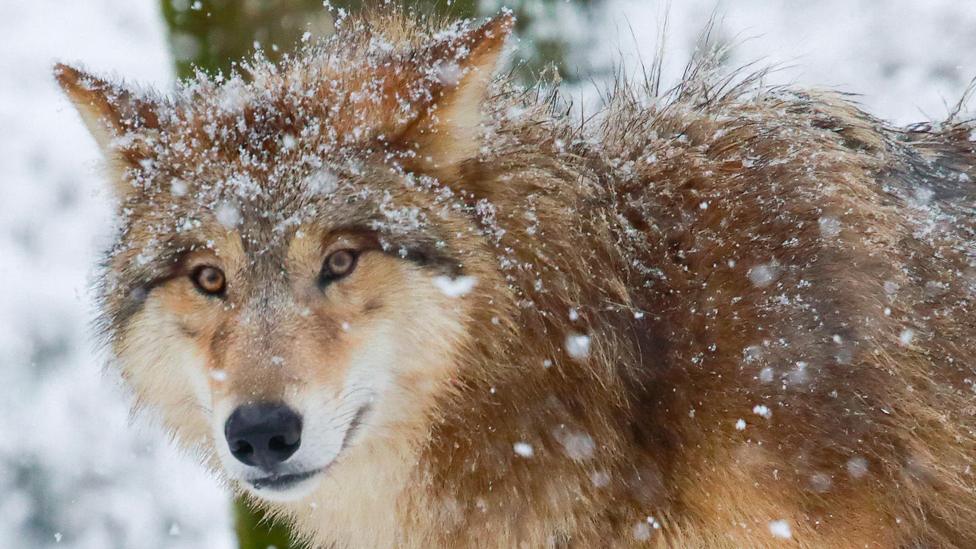The child-killing wolves sparking panic in India
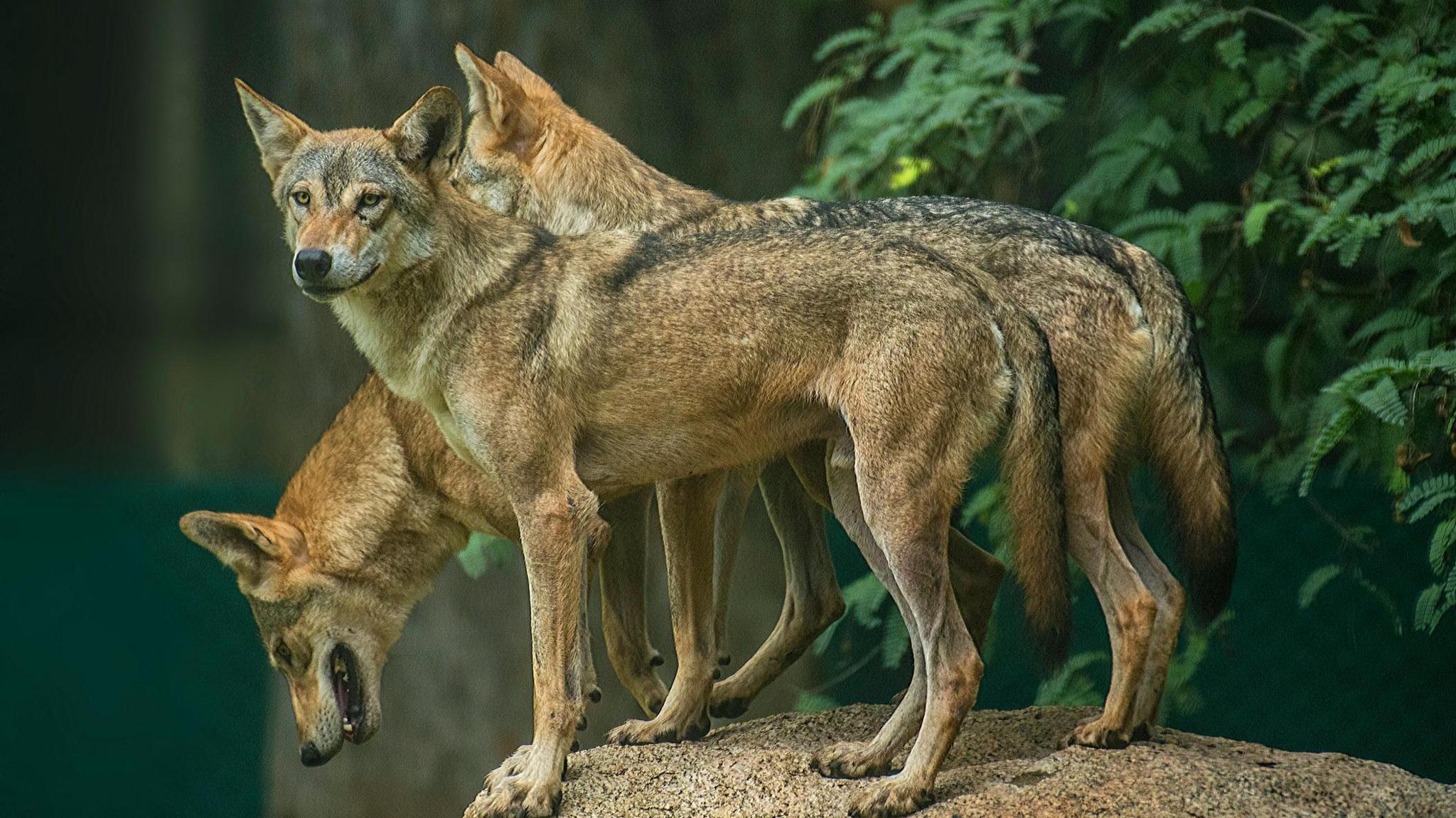
India has an estimated 3,100 wolves spread over a number of states
- Published
Four-year-old Sandhya was sleeping outside her mud hut in India’s Uttar Pradesh state on the night of 17 August when a power cut plunged the village into darkness.
"The wolves attacked within two minutes of the lights going out. By the time we realised what was happening, they had taken her away," recalls her mother, Sunita.
Sandhya’s body was found lying next day in the sugarcane farms, some 500 metres from her home.
Earlier in the month, in a neighbouring village, eight-year-old Utkarsh was sleeping under a mosquito net when his mother spotted a wolf creeping into their hut.
"The animal lunged from the shadows. I screamed, 'Leave my son alone!' My neighbours rushed in, and the wolf fled," she recounts.
Since mid-April, a wave of wolf attacks, external has terrorised around 30 villages in Bahraich district, near the border with Nepal. Nine children and an adult have been carried off and killed by the wolves. The youngest victim was a one-year-old boy, and the oldest was a 45-year-old woman. At least 34 others have been injured.
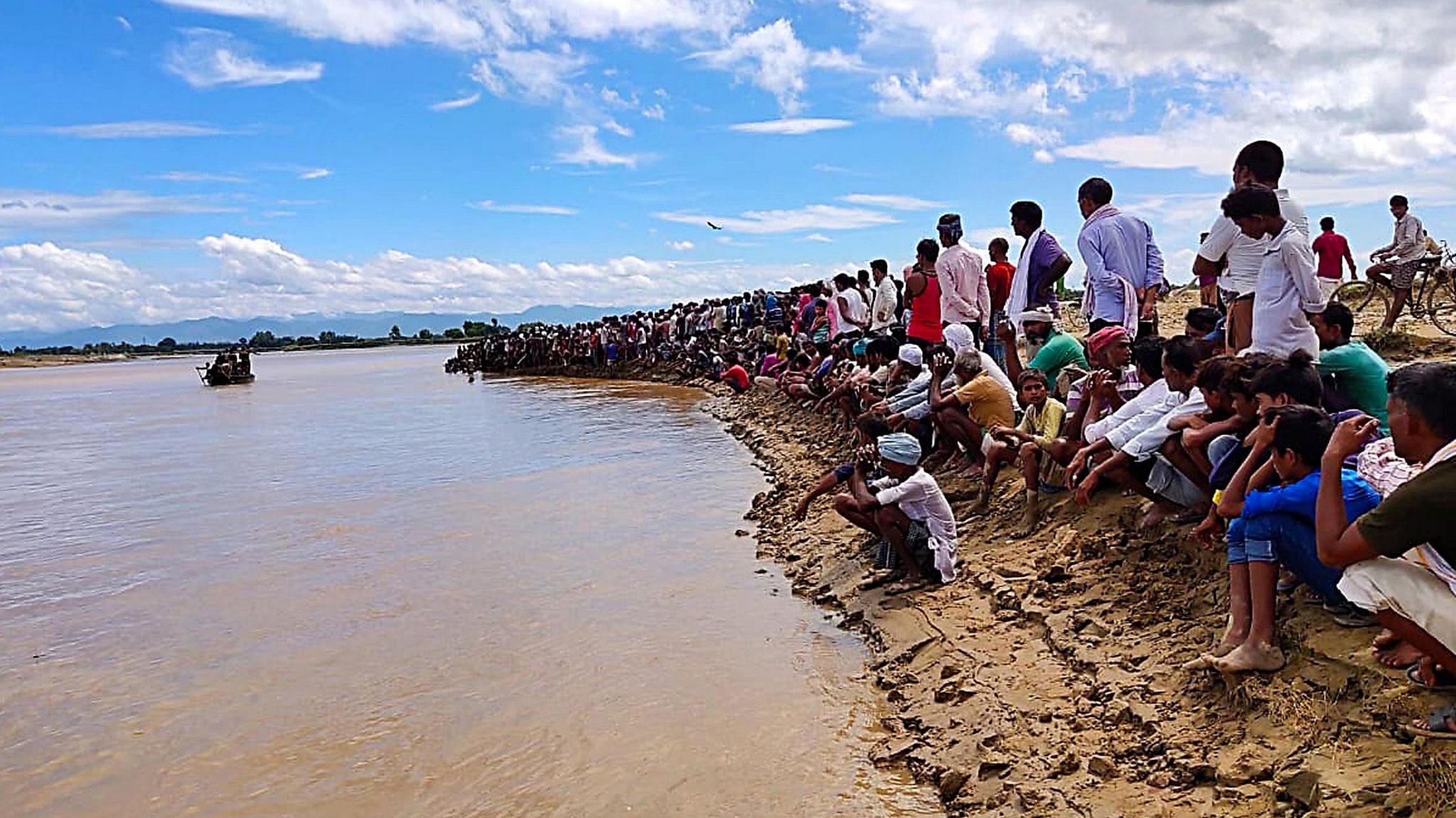
Bahraich is a flood-prone district
Fear and hysteria have gripped the affected villages. With many village homes lacking locks, children are being kept indoors, and men are patrolling the darkly lit streets at night. Authorities have deployed drones and cameras, set traps and used firecrackers to scare away the wolves. So far, three wolves have been captured and relocated to zoos.
Such attacks on humans are extremely rare and most involve wolves infected with rabies, a viral disease that affects the central nervous system. A rabid wolf will typically make multiple assaults without consuming the victims.
A report, external by the Norwegian Institute for Nature Research reported 489 "relatively reliable cases" of wolf attacks in 21 countries - including India - between 2002 and 2020. Only 26 of them were fatal. Around 380 people were victims of "rabid attacks".
There have been only two confirmed cases of wolf-related fatalities in North America over the past 50 years, Dave Mech, a renowned American biologist who specialises in wolf behaviour, told the BBC. This is despite a population of approximately 70,000 wolves spread across North America.
So why are wolves attacking humans in Bahraich?
Nestled between a river and forests, parts of Bahraich have long been a traditional wolf habitat. Located in the floodplain of the Ghaghara river, the district, home to 3.5 million people, is prone to seasonal flooding.
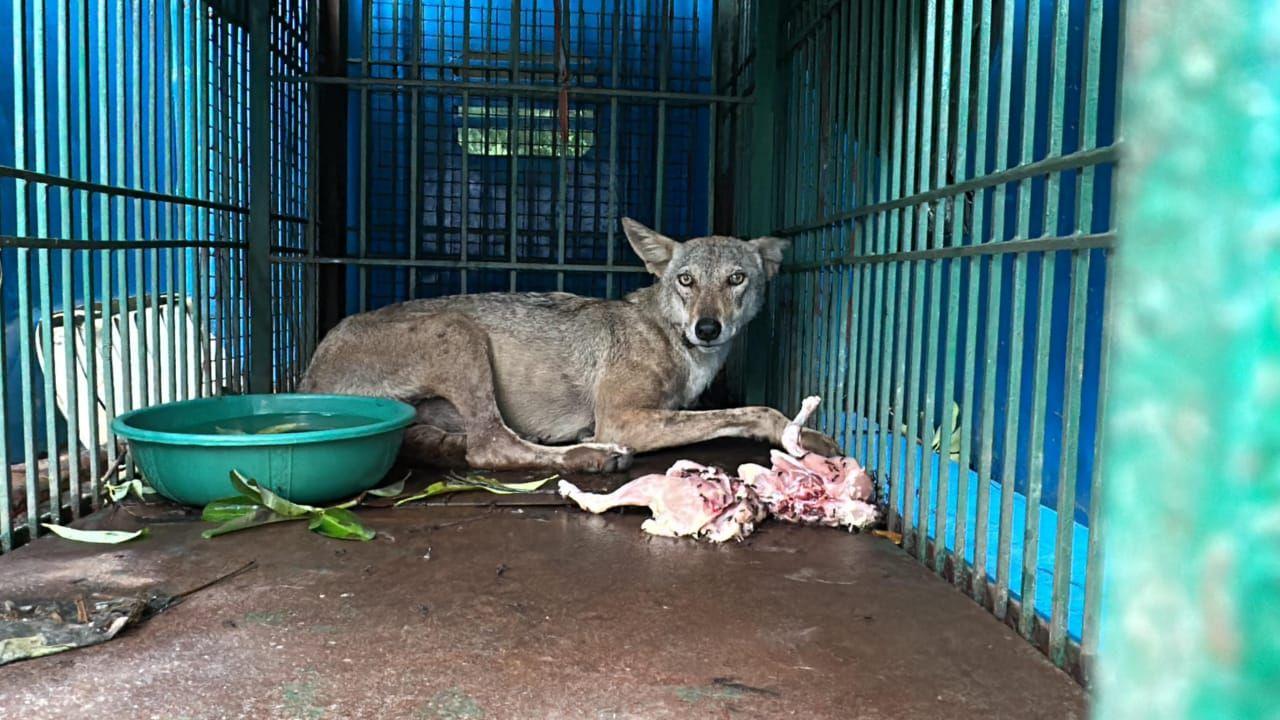
A number of wolves have been caught and sent to zoos
Heavy rains and flooding during the monsoons have drastically altered the landscape. The swollen river has inundated the forests, potentially driving the wolves out in search of food and water. Indian wolves prey on black buck, chinkara (Indian gazelle) and hare.
“Climate change is a gradual process but flooding can lead to habitat disruptions for the wolves, forcing them into human settlements in search of food,” says Amita Kanaujia of the Institute of Wildlife Sciences in Lucknow University.
Why would children be a target of the wolves in search of food?
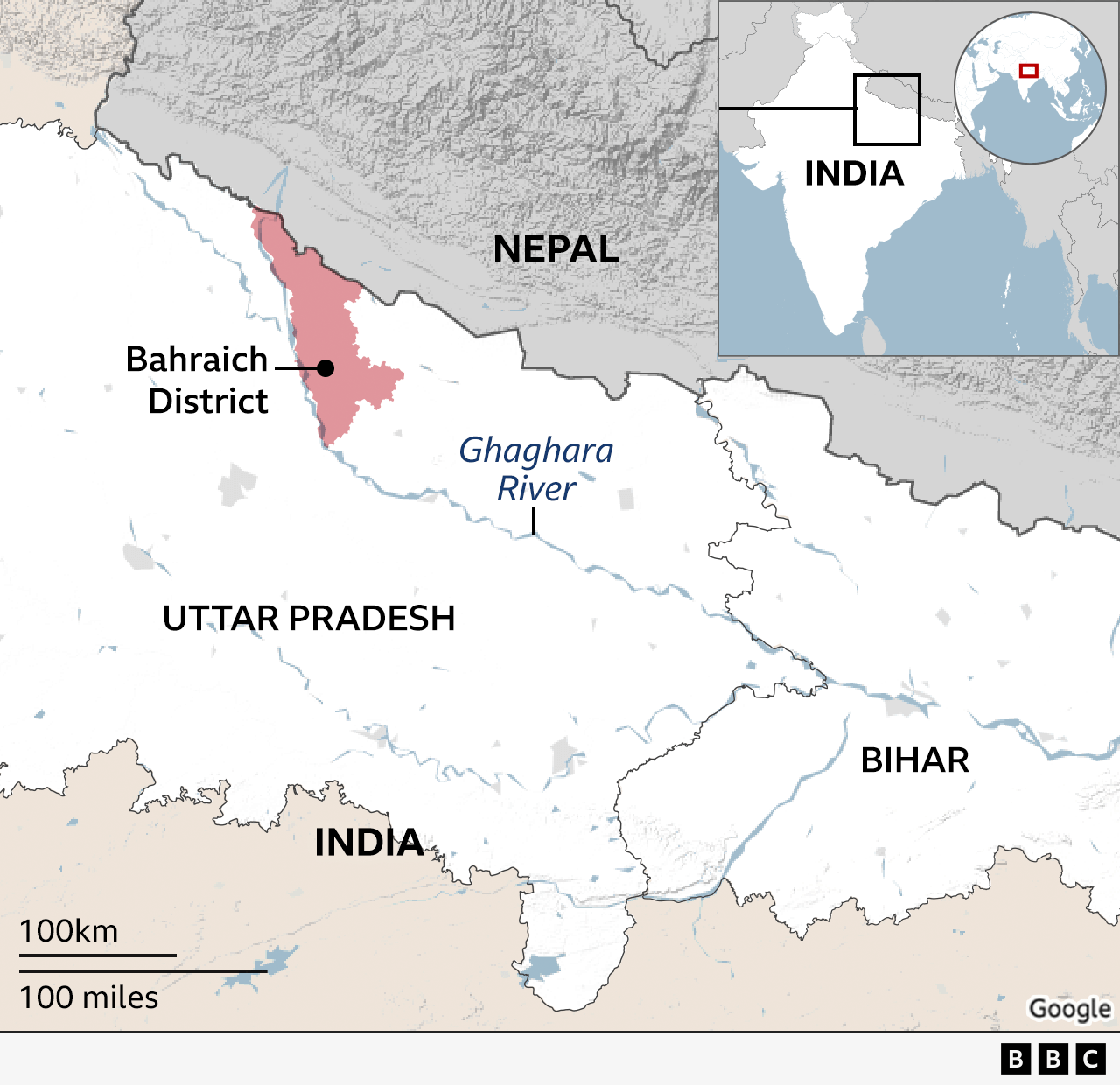
During an investigation into killings of a large number of children in wolf attacks in Uttar Pradesh villages in 1996, wildlife experts found there was minimal supervision of children because most victims came from impoverished single-parent households, usually led by mothers.
In these poor Indian villages, livestock is often better protected than children. When a hungry wolf, facing a depleted prey habitat and limited access to livestock, encounters such vulnerable children, they become more likely targets. "Nowhere else in the world have we witnessed surges of wolf attacks on children," Yadvendradev Jhala, a leading Indian scientist and conservationist, told me.
The current wolf attacks in Uttar Pradesh are possibly the fourth such wave in four decades. In 1981-82, wolf attacks in Bihar claimed the lives of at least 13 children. Between 1993 and 1995, another 80 children were attacked, this time by what were believed to be five wolf packs in the region's Hazaribagh district.
The deadliest episode occurred over eight months in 1996, when at least 76 children from more than 50 villages in Uttar Pradesh were attacked, resulting in 38 deaths. The killings stopped after authorities killed 11 wolves. The media described them as “man-eating” wolves.
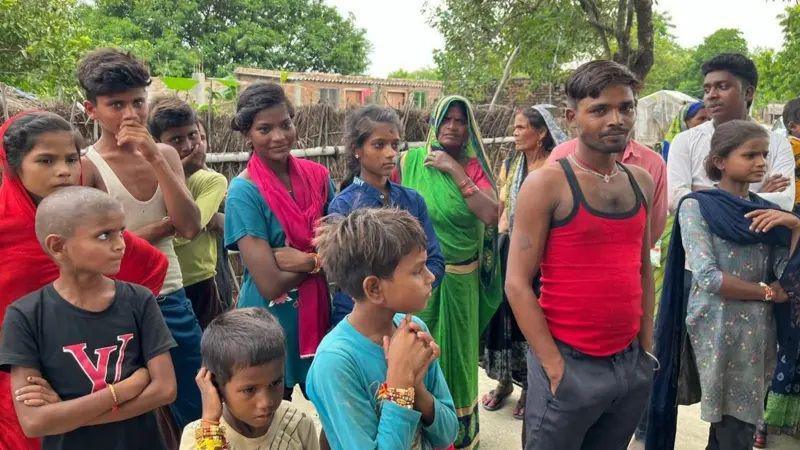
The attacks have sparked fears among villagers in Bahraich
Mr Jhala and his colleague Dinesh Kumar Sharma conducted a meticulous investigation into the 1996 killings, examining body remains, wolf hair, village hutments, population density, livestock and autopsy reports. The current attacks in Uttar Pradesh bear an eerie resemblance to their findings from nearly 30 years ago.
In both instances, children were killed and partially consumed, showing bite marks on their throats and puncture wounds on various parts of their bodies. Most attacks occurred at night, with children sleeping outdoors in the heart of villages being taken away. Victims were frequently discovered in open areas, such as farms or meadows.
Like Bahraich today, the 1996 wolf attacks took place in villages near riverbanks, surrounded by rice and sugarcane farms and swampy groves. Both cases involved crowded villages and a large number of vulnerable children from poor farming families, which increased the risk.
It is unclear whether the ongoing attacks are by a lone wolf or a pack. Based on his 30 years of studying wolves, Mr Jhala believes that a single wolf - like in 1996 - is probably responsible for the recent killings. Villagers have reported seeing a group of five to six wolves in their fields during the day, while the mother of eight-year-old Utkarsh, who survived, saw a single wolf entering her home and attacking her son.
For centuries, humans and wolves in India co-existed peacefully, thanks to the traditional tolerance of pastoralist communities, say wildlife experts. This long-standing co-existence has allowed wolves to persist despite frequent conflicts, particularly over livestock. However, times have changed, and the recent surge in attacks has raised new concerns.
Wildlife experts like Mr Jhala advise that children in the affected villages should stay indoors, sleep between adults if housing is inadequate, and be accompanied by an adult to the toilet at night. Villagers should avoid letting children roam unsupervised in areas where wolves might be hiding and appoint night watchmen to patrol the streets.
“Until we determine the exact reasons behind these attacks, these precautions are crucial to keep people safe,” Mr Jhala says. Meanwhile, people in Bahraich remain on edge every night.
Read more on this story:
- Published12 October 2018

- Published23 June 2024
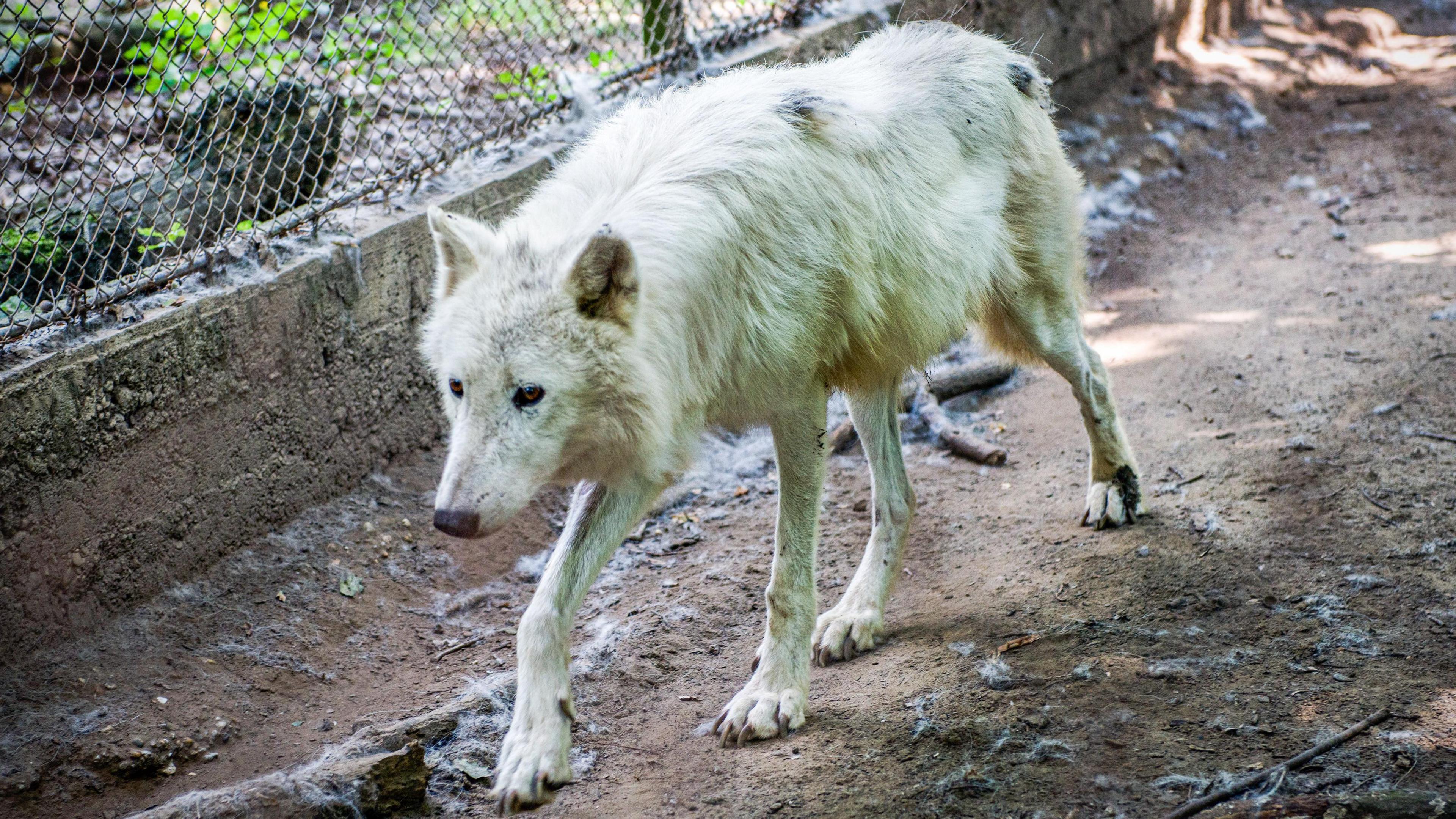
- Published24 December 2021
